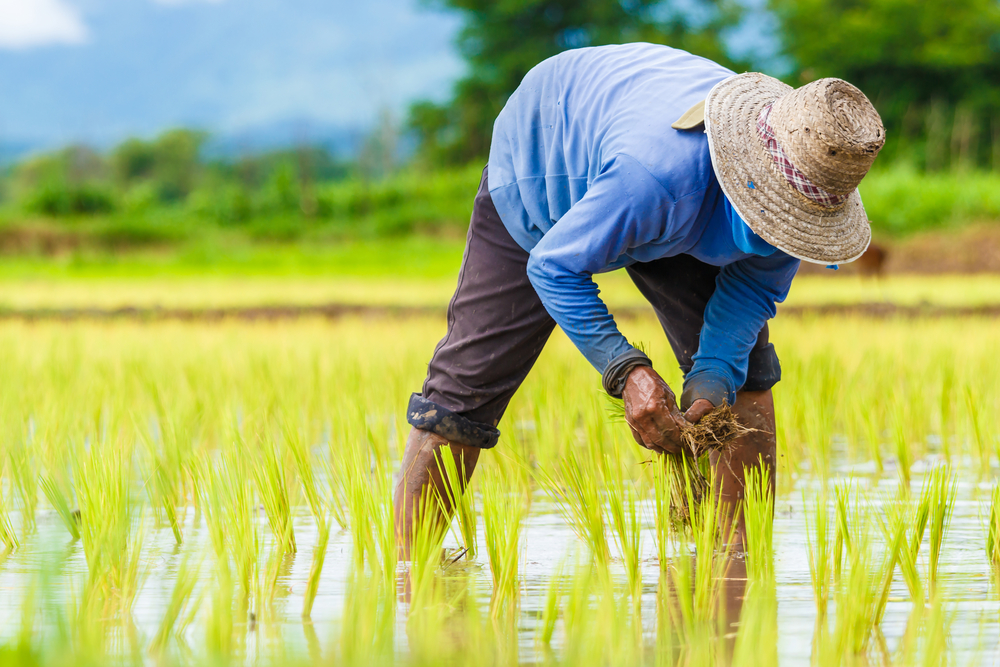Rice is one of the most widely consumed staples in Nigeria, and local production still struggles to meet rising demand. For anyone looking to grow a profitable and high-demand crop, rice is a smart choice. And if you’re waiting for the perfect time to start, this is it. Rice thrives in waterlogged conditions, especially in rainfed lowland areas, and the natural rainfall this season provides exactly what the crop needs to grow strong and yield well. If you haven’t already gotten started, now is the time to take that first step.
Whether you’re new to rice farming or not, this blog will walk you through the key things you need to know: choosing the right seed variety, preparing your land, managing weeds, protecting your crop, and harvesting for profit. Let’s get into it.
1. Understand your land before you plant
Every successful rice farm starts with knowing your soil and your environment. Rice thrives best in warm, humid climates with an abundant water supply, which makes areas in the lowland tropics especially suitable. Your first task should be a soil test to determine fertility, pH, and any nutrient deficiencies. Rice does best in slightly acidic to neutral soil, ideally between 5.5 and 7 pH. This allows you to know exactly what your soil needs before planting begins—whether it’s lime to raise pH or organic compost to boost fertility.
If your farm is located in a rainfed or irrigated lowland area, your rice crop will likely flourish, provided you manage the water well.
2. Choose the right rice variety for your location and goals
Picking the right seed variety makes all the difference. Your choice should reflect both your ecological zone and the kind of yield you want to achieve.
FARO 67 is a standout option for many farmers. It’s a high-yielding variety, capable of producing up to 6.7 tons per hectare. This variety features long to medium slender grains and takes about 120 to 125 days to mature. It’s moderately tolerant to iron toxicity and can survive temporary submergence. FARO 67 is especially recommended for Derived, Guinea, Sudan, and Sahel savanna ecologies. Its seed rate is around 60 to 80 kg per hectare, and it performs best under rainfed lowland conditions.
FARO 44, on the other hand, is ideal if you’re looking for an early-maturing variety. It matures in 95 to 110 days, yielding around 4 to 5 tons per hectare. Like FARO 67, it has long to medium slender grains and is tolerant to iron toxicity. This variety is well-suited for irrigated lowland ecosystems, and you should aim for a seed rate of 60 to 80 kg per hectare.
Choosing a variety without considering your ecology or market needs can lead to losses, so always match the seed to your setting.
3. Prepare your land like it’s half the job—because it is
Don’t rush into planting without a properly cleared and prepared field. The first step is land clearing, and this is where herbicides like Slasher Super and Gobara SG come in handy.
Slasher Super is a contact and partly systemic non-selective herbicide with a longer residual effect. It contains Glufosinate ammonium 60% and Flumioxazin 6% WP, making it ideal for clearing dense weeds and bushy fields before planting.
Gobara SG is another strong option. It’s a non-selective, systemic herbicide with 75.7% Glyphosate SG, designed to tackle both annual and perennial grasses, broadleaved weeds, and sedges. It’s particularly effective for preparing the land after the previous cropping season.
After clearing, move on to ploughing and harrowing to loosen the soil. If you’re working in a lowland area, build bunds and level the land for uniform water retention. A well-levelled field not only supports even plant growth but also aids water control during irrigation.
4. Control weeds early using the right herbicides
Weeds are one of the biggest threats to rice productivity, especially in the early stages. For best results, combine pre-emergence and post-emergence herbicides in your weed management plan.
Use Pendigold as a pre-emergence herbicide. Apply it immediately after planting or within 24 hours of planting to achieve the best results.
For post-emergence, we recommend any of our products: Select, Selet Gold, Nominee Gold, and Actrox.
5. Manage water as if your yield depends on it—because it does
Rice is a thirsty crop, but too much water can cause just as much damage as too little. During the early stages, maintain shallow water levels (around 5 cm), increasing slightly as the plant grows.
Drain water during the flowering period to prevent grain sterility and resume again after flowering. If you’re in an area where irrigation is necessary, schedule water cycles carefully. Good water management supports better root health, reduces weed pressure, and improves overall yield.
Wrapping up,
Getting started with rice farming isn’t as complicated as it may seem, but it does require planning, precision, and a willingness to learn. Start with a small plot to understand the process, and don’t cut corners when it comes to land preparation, weed control, or seed selection.
Still not sure where to begin or what product is right for your farm? Reach out to us on any of our social media platforms—we are always ready to help. Or better yet, download the FarmPropa App and try the Product Recommender feature. It’s designed to guide you through product choices tailored to your crop, location, and specific farm needs—right from your phone.

Leave a Reply